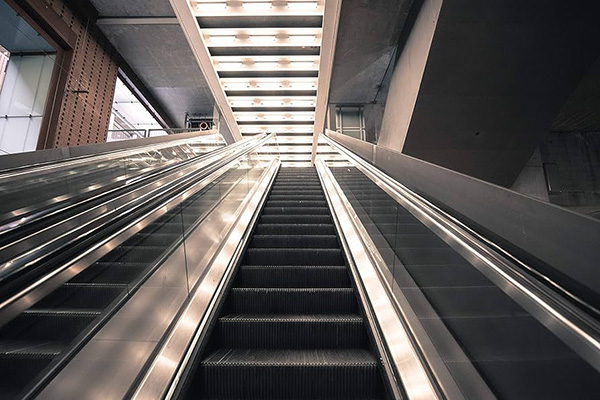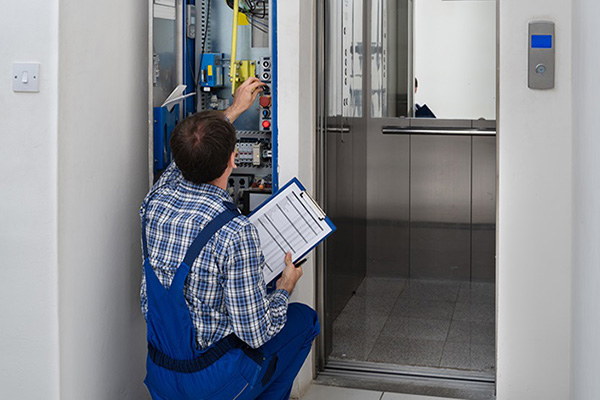If you own or manage an industrial or commercial building with elevators, you know how important it is to be proactive about preventative maintenance. Just as you wouldn’t forget to replace a flickering light bulb in the hallway and leave your customers, clients, or tenants in the dark, you need to be aware of the repair issues in your elevator systems. If problems aren’t addressed early, they can become unmanageable and, over time, affect passenger safety and ride quality.
If your building’s elevators are electric/traction or torsion drum, the elevator car is suspended by a series of ropes, belts, or cables known as “suspension devices” (as shown in the diagram).
Regardless of the height of the building, the most common type of elevator suspension device is wire ropes. There are also elevators that use different types of suspension devices, including non-circular elastomer-coated steel belts and aramid fiber ropes – these have different criteria for replacement. For the purposes of this article, we will focus on wire ropes.
The type of suspension device used and the number of ropes or belts that suspend the elevator in its shaft are determined by the speed, capacity, and tension of the elevator. The more cables used, the more tension is applied to the pulley. Unless your elevator system uses a torsion drum device (which is an older technology), the law requires a minimum of three ropes. Three-rope suspension systems are commonly found in low-rise, slow-moving buildings. Some high-speed, electric/traction elevator systems can use up to eight ropes.
It is important to note that for safety reasons, according to building codes, whenever a rope replacement project is carried out on an elevator, you cannot just replace one of its ropes – all the ropes in that elevator must be replaced at the same time with new ropes. Previously used elevator ropes can never be used as replacement ropes.
Some of the things you may notice that indicate whether it is time to replace your suspension equipment include:
Rolling. Elevator ropes are made of wire strands wrapped around an oil-saturated hemp core. If the core starts to wear out and dry out, it turns into powder. This causes the wire strands surrounding it to lose their lubrication and begin to rust. Rust collects in clumps of red-orange dust that you may see in the engine bay or on the edges of the floor.
Unusual vibrations or noises, such as a clicking or popping sound, coming from your system. If the cables are stretched, or if the grooves that hold them in the pulley wear unevenly, the cables may come loose, causing them to hit walls or other cables or shake.
Pieces of broken cable on the floor under the pulley in the engine bay.
Metal shavings or dust around the drivers or pulley in the engine bay.






